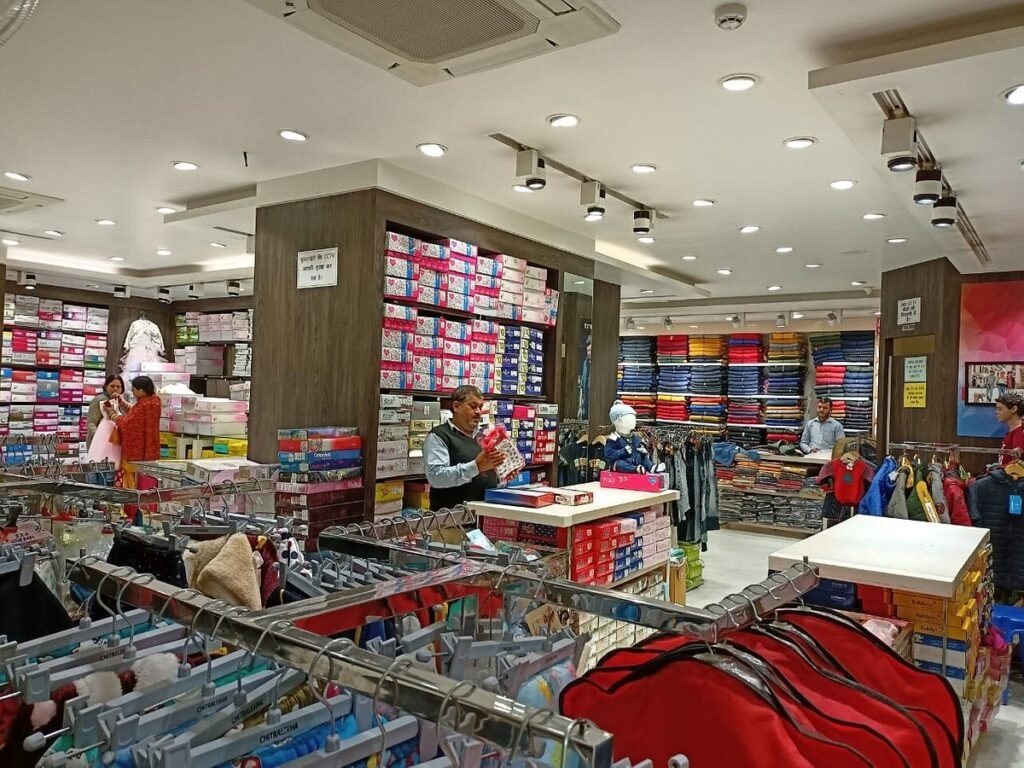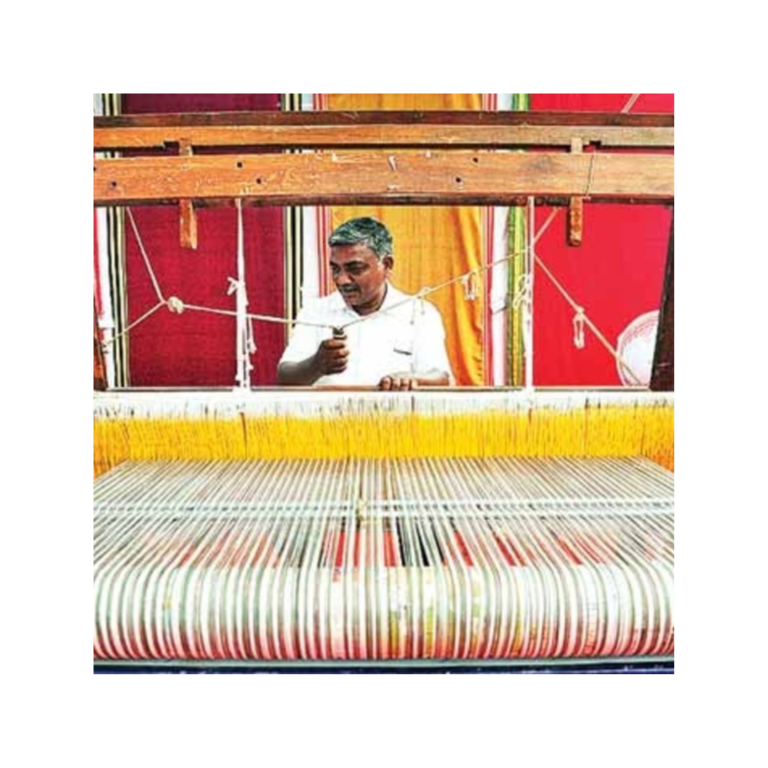Bihar’s Fashion Renaissance: Handloom, Khadi & Rural Trends
Youth & Rural Fashion in Bihar, a state known for its rich cultural heritage and historical significance, is experiencing a fashion renaissance. Its traditional arts and crafts, particularly in textiles and handloom, are making a strong comeback in modern wardrobes. The state has become a vibrant hub of fashion that blends the ancient and the contemporary, offering a unique mix of styles that appeal to both the urban youth and rural communities.
The fashion scene in Bihar is not only about aesthetics but also about sustainability and supporting local artisans. From the rise of handloom and khadi clothes among the youth to the steadfastness of rural fashion, and the resurgence of handcrafted traditional sarees like Madhubani, Bihar’s fashion landscape is diverse and steeped in cultural significance.
1. Youth Embracing Handloom and Khadi Clothes
In recent years, there has been a noticeable shift in fashion trends among Bihar’s youth, with an increasing preference for handloom and khadi clothes. As the global movement towards sustainable and ethical fashion gains momentum, young people in Bihar are opting for fabrics that are eco-friendly, locally made, and steeped in tradition. This shift is not just about aesthetics; it reflects a deeper consciousness about the environmental and social impacts of fast fashion.
Khadi has long been associated with India’s independence movement, championed by Mahatma Gandhi as a symbol of self-reliance and simplicity. Today, it has evolved into a trendy, sustainable fabric embraced by the youth for its breathability, comfort, and versatility. In Bihar, khadi is no longer seen as just traditional attire; it is being reimagined in modern designs. Youth are pairing khadi kurtas with jeans, wearing khadi shirts for casual outings, and even sporting khadi jackets for a more formal look.
Handloom fabrics, such as cotton and silk, are also gaining popularity. These fabrics are not only stylish but also sustainable, as they are woven using traditional methods that have been passed down through generations. Handloom kurtas, sarees, and blouses are often seen at weddings, festivals, and other events, as young people mix these traditional clothes with modern accessories. This resurgence of handloom and khadi is not only helping revive Bihar’s weaving industry but also empowering local artisans, providing them with a steady livelihood.
The renewed interest in these traditional fabrics among the youth has contributed to the preservation of Bihar’s rich textile heritage. By choosing handloom and khadi, young fashion enthusiasts are helping to keep ancient craftsmanship alive while promoting sustainable fashion.
2. Fashion in Rural Bihar: A Fusion of Tradition and Simplicity
While urban Bihar is witnessing a modern transformation in fashion, rural Bihar remains deeply rooted in tradition. The fashion in rural areas is characterized by its simplicity, practicality, and connection to cultural heritage. However, this does not mean rural fashion is static; it, too, has evolved over time while retaining its core traditional elements.
In rural Bihar, sarees and kurta-pajamas are the staple attire. Women typically wear sarees made from handloom fabrics like cotton and silk, often adorned with natural dyes and traditional designs. These sarees are practical for daily wear, yet they can be elegant and vibrant, especially during festivals and special occasions. The beauty of rural fashion lies in its adherence to time-honored customs while embracing small, subtle innovations.
Men in rural Bihar often wear dhotis or kurta-pajamas, which are both comfortable and culturally significant. The kurta-pajama, especially in handloom cotton, is ideal for the hot and humid climate of the region. During festivals like Chhath Puja, men don more festive versions of these garments, often in bright colors and adorned with minimal embroidery.
Despite the encroachment of modern fashion trends, rural Bihar holds onto its traditional clothing with pride. This adherence to tradition serves as a contrast to the more rapidly changing fashion trends in the cities. However, there is also an interesting fusion happening, where younger generations in rural areas are beginning to mix traditional clothing with modern accessories, creating a blend of old and new that is unique to the region.
Festivals and weddings play a significant role in shaping rural fashion. Ethnic clothes, often passed down through generations, are worn with great pride. Handloom sarees, in particular, take center stage during these events, with women showcasing the intricate craftsmanship that goes into each piece. This celebration of tradition ensures that rural Bihar’s fashion remains both timeless and evolving.
3. Handcrafted Clothes: The Beauty of Madhubani Sarees and Traditional Handloom
One of Bihar’s greatest contributions to Indian fashion is its exquisite handcrafted textiles, particularly the Madhubani saree. Named after the famous Madhubani art form, these sarees are hand-painted with intricate designs that often depict scenes from mythology, nature, and folklore. The artistry involved in creating these sarees is truly remarkable, with each piece being a work of art that tells a story. Madhubani sarees are not just clothing; they are cultural artifacts that carry forward Bihar’s artistic legacy.
These sarees are highly sought after for festivals, weddings, and other formal occasions. Their bold, colorful patterns make them stand out, and they are often paired with handcrafted jewelry to complete the look. Madhubani sarees are symbolic of Bihar’s rich craftsmanship, and their popularity continues to grow both within the state and across India.
Beyond Madhubani, Bihar is also known for other traditional handloom fabrics like Bhagalpuri silk and tussar silk. Bhagalpuri silk sarees, often referred to as “the queen of silks,” are known for their natural sheen, softness, and durability. They are perfect for weddings and formal occasions, offering both elegance and comfort. Tussar silk, also known as wild silk, is another popular fabric from Bihar. Its rich texture and natural gold color make it a favorite among saree lovers.
The resurgence of these traditional handloom textiles is not just about fashion; it is also about preserving a craft that has been passed down through generations. By choosing handcrafted clothes like Madhubani sarees or Bhagalpuri silk, buyers are supporting local artisans and ensuring that these ancient techniques continue to thrive in the modern world.
Conclusion
Fashion in Bihar is a dynamic blend of tradition and modernity, with handloom and khadi fabrics making a strong comeback among the youth, rural areas maintaining their deep-rooted cultural fashion, and handcrafted textiles like Madhubani sarees capturing the hearts of fashion lovers across the country. As the state continues to embrace its rich textile heritage, it is also paving the way for sustainable and ethical fashion practices that benefit local artisans and the environment.
Whether you are looking for sustainable fashion, traditional ethnic wear, or handcrafted sarees, Bihar’s fashion landscape offers something for everyone, making it a vibrant and evolving part of India’s fashion story and clothing sense is changing of Youth & Rural Fashion in Bihar.



